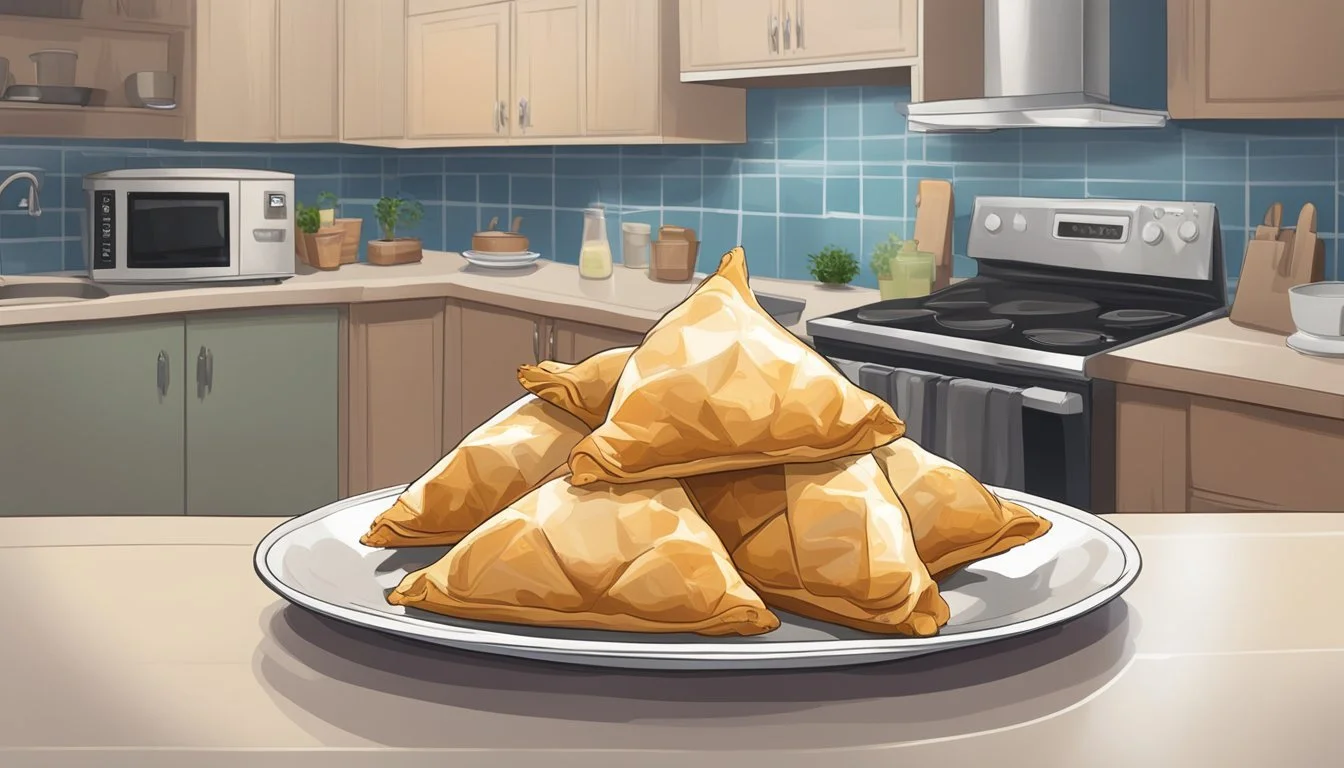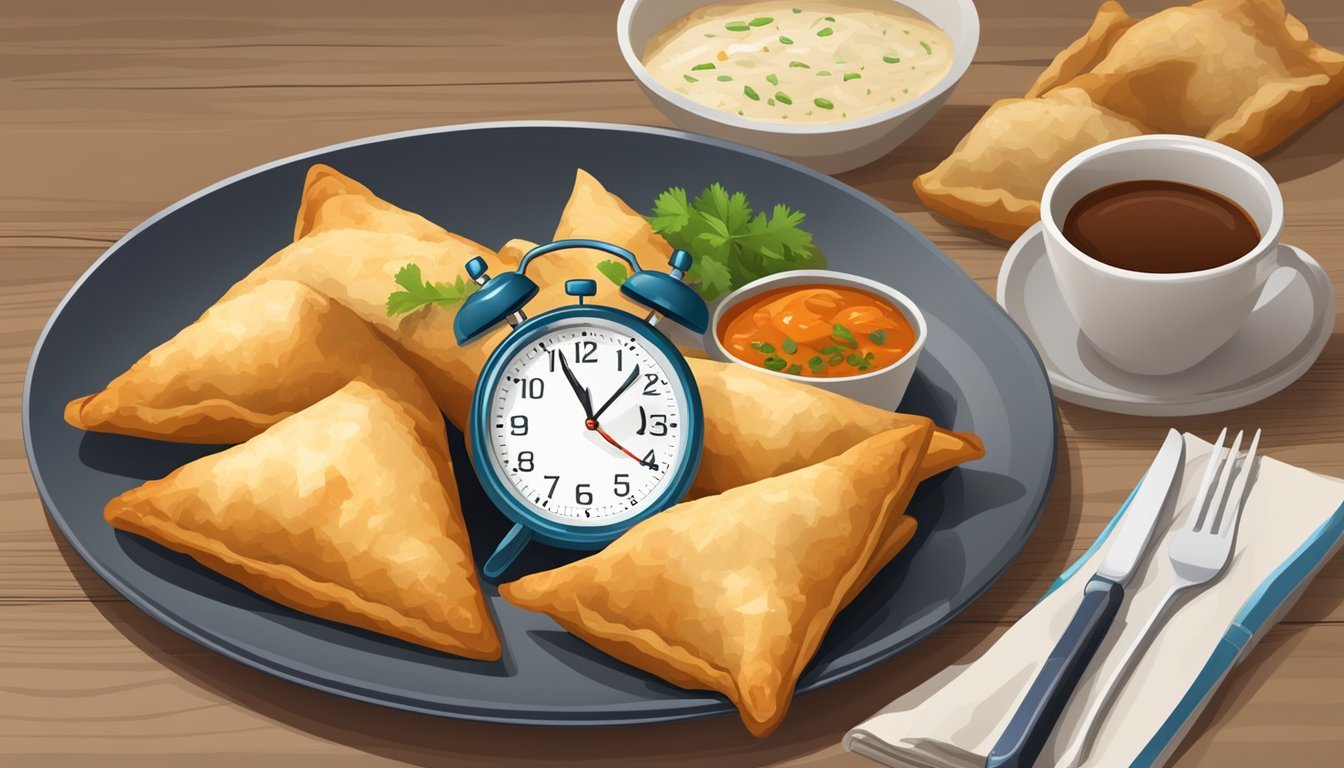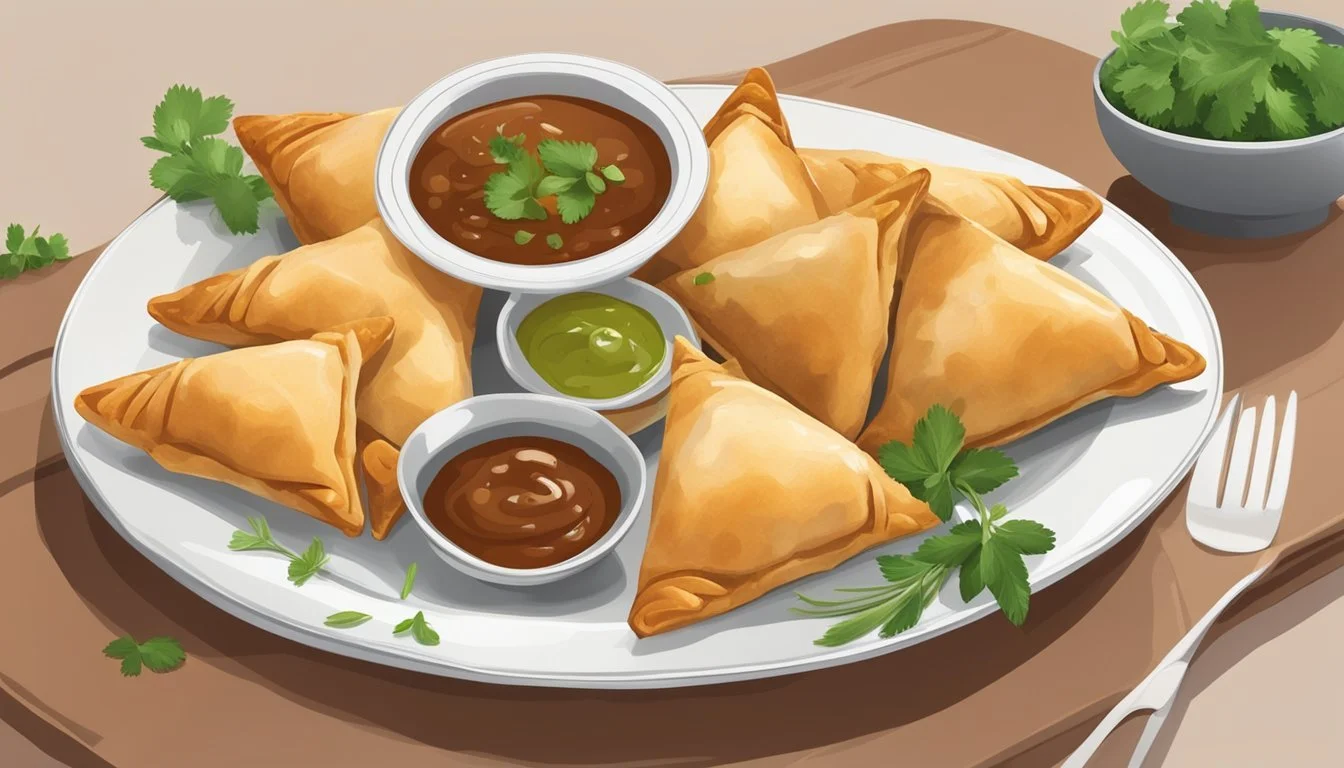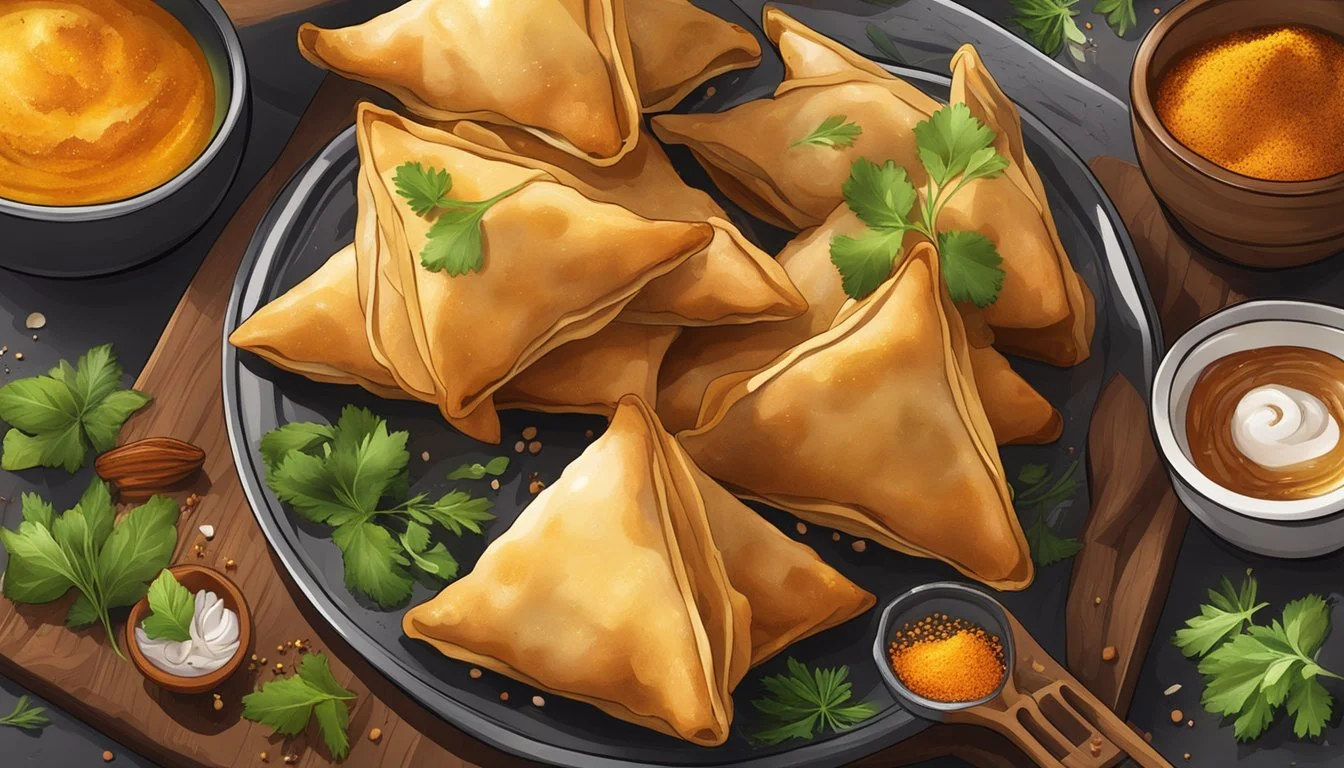How Long Do Chicken Samosas Last?
A Guide to Proper Storage and Freshness
Chicken samosas are a popular snack enjoyed by many, but how long do they last? Understanding the shelf-life of chicken samosas is crucial to maintain their quality, flavor, and safety. Properly stored, chicken samosas can last in the fridge for up to 3-4 days, while they can be kept in the freezer for up to 2 months.
Maintaining the crispy texture of chicken samosas is also essential. When refrigerated, stored samosas can become soggy over time. To preserve their crispiness, it's advisable to reheat them in the oven or an air fryer. Following the right storage techniques ensures that you can enjoy your samosas without compromising their delightful, crispy nature.
It's not just about longevity but also about retaining that fresh taste. To keep the flavor intact, storing chicken samosas in airtight containers helps protect them from absorbing unwanted odors from the fridge. Always make sure to cool them down to room temperature before placing them in the fridge or freezer for best results.
Understanding Chicken Samosas
Chicken samosas are a popular snack made with a crispy outer shell and a flavorful filling. This section explores their composition, various filling options, and cultural significance.
Composition and Ingredients
Chicken samosas are typically made with a crispy dough shell. This shell is crafted from all-purpose flour, water, and a pinch of salt. Inside, the filling generally includes ground chicken.
The filling often contains a mixture of onions, garlic, and various spices. Spices commonly used include turmeric, cumin, and coriander, providing a rich and aromatic flavor profile. The samosas are usually deep-fried until golden brown, though baking is an alternative method.
Samosa Filling Varieties
While chicken is a prevalent choice for the filling, there are many variations.
Chicken keema is a popular filling option, utilizing minced chicken cooked with spices. Ingredients like ginger, garlic, and onions are typically included for a depth of flavor.
Other versions might incorporate vegetables, such as peas, to add texture and enhance the nutritional value. The diversity in fillings allows for a range of taste experiences, catering to different culinary preferences.
Cultural Significance of Samosas
Originating from Central Asia, samosas have become integral to various cultures, especially in South Asia.
In India and Pakistan, samosas are often enjoyed as a snack or appetizer, frequently served during festivals and special occasions. They are commonly found in street markets and are a staple in household kitchens during celebrations.
The versatility and adaptability of samosas across different regions highlight their enduring popularity and cultural importance. Whether filled with chicken, vegetables, or other meats, samosas bridge culinary traditions and are cherished by many.
Preparation Techniques
Mastering the preparation techniques for chicken samosas involves creating the perfect dough, filling and folding the pastry, and exploring different cooking methods to achieve that impeccable crispy texture.
Creating the Perfect Dough
Making samosa dough starts with a mixture of flour, ajwain, and salt. To this, oil is added, and the flour is rubbed between fingers until the oil incorporates thoroughly.
The dough must be firm yet pliable. Knead the dough for around 5-7 minutes and then let it rest for at least 30 minutes. This helps relax the gluten, making the dough easier to roll out.
Filling and Folding Tips
For the filling, cook a mix of ground chicken, onion, ginger, garlic, and spices like cumin and coriander until the mixture is well combined and aromatic. Allow the filling to cool completely before using.
To fold, cut the dough into strips, place a small amount of filling at one end, and fold in a triangular pattern until you reach the end. This ensures a compact and sealed samosa.
Cooking Methods Compared
Deep Frying: Heat vegetable oil in a large frying pan or deep fryer to 350°F. Fry samosas until golden brown, about 5-7 minutes per batch. This method leads to a traditional, crispy texture.
Oven Baking: Preheat the oven to 350°F. Place samosas on a parchment-lined baking sheet and bake for 20-25 minutes, flipping halfway. This method is healthier but might result in a less crispy texture.
Air Frying: Set the air fryer to 350°F and cook samosas for 12-15 minutes. Air frying offers a good balance, producing a relatively crispy texture with less oil usage.
Safe Storage Solutions
To maximize the shelf life and maintain the quality of chicken samosas, proper storage techniques are essential. This includes effective refrigeration, freezing methods, and recognizing signs of spoilage.
Refrigeration Practices
Storing chicken samosas in the fridge can extend their freshness. After cooking, let the samosas cool to room temperature. Wrap them tightly in foil or plastic wrap to minimize air exposure. Then, place them in an airtight container to prevent moisture loss and contamination.
Store the container at a consistent fridge temperature of 40°F (4°C) or below. Chicken samosas can last for up to 2-3 days in the fridge. Regularly check for any off smells or visible mold.
Freezing and Thawing Methods
For longer storage, freezing chicken samosas is highly effective. After allowing them to cool, wrap each samosa in plastic wrap to prevent them from sticking together. Place the wrapped samosas in a single layer inside a freezer-safe airtight container.
This method helps maintain texture and flavor for up to 3 months. When ready to eat, thaw in the fridge overnight. Reheat in an oven preheated to 350°F (180°C) until fully warmed through, about 10-15 minutes.
Preventing Freezer Burn and Sogginess
Freezer burn can compromise the quality of chicken samosas. To prevent this, ensure that samosas are tightly wrapped in foil or plastic wrap before placing them in an airtight container. Remove as much air as possible from the container to reduce the risk of freezer burn.
For reheating frozen samosas, using an oven rather than a microwave prevents sogginess. Microwave reheating can make the crust less crispy, leading to an undesirable texture.
Recognizing Spoilage and Bacteria Growth
Knowing when to discard chicken samosas is crucial for food safety. Look for signs such as unusual or moldy smells, visible mold, and an off texture. Consuming spoiled samosas can lead to foodborne illnesses.
To avoid this, always rely on your senses. If anything seems off, it’s best to discard the samosas. Consistently maintaining proper storage temperatures and times is key to preventing bacterial growth and spoilage.
Effective Reheating Strategies
Maintaining the quality and texture of chicken samosas after refrigeration requires careful reheating methods. Each method offers specific benefits to ensure your samosas remain delicious and crispy.
Oven Reheating for Optimal Crispness
Using the oven for reheating samosas ensures they stay crispy. Preheat the oven to 350°F (175°C). Place the samosas on a baking sheet lined with parchment paper. This prevents sticking and ensures even heat distribution. Bake for 15-20 minutes or until they are heated thoroughly.
A wire rack can also be used instead of baking paper, which helps air circulate, leading to a uniform crispness. Check the center with a fork to ensure they are hot. Avoid over-baking as it can dry out the filling.
Microwave Tips for Quick Results
Microwave reheating is the fastest method but can result in soggy samosas. To avoid this, use medium power (50% intensity). Place samosas on a microwave-safe plate. Heat for 30 seconds initially, then flip the samosas over using tongs.
Continue microwaving in 20-second bursts until they are heated through. Using the microwave's grill function, if available, can help retain crispiness. Be cautious not to overheat, which can compromise texture.
Stovetop Reheating for Even Texture
Reheating samosas on the stovetop offers a balance between speed and texture. Use a non-stick skillet over medium heat. Add a small amount of oil to the pan. Place the samosas in the skillet and cover with a lid to trap heat.
Flip the samosas after 3-4 minutes to heat the other side evenly. This method creates a crispy outer layer while ensuring the filling is warmed. Keep an eye on the heat to prevent burning.
Avoiding Common Reheating Mistakes
Several common mistakes can affect the quality of reheated samosas. Avoid microwaving on high power; this can make the exterior chewy. Do not overcrowd the oven or skillet; this leads to uneven heating.
Avoid frequent flipping; it can cause the pastry to break apart, leading to a loss of filling. Ensure the samosas reach an adequate internal temperature to ensure they are safe to eat.
Nutritional Information
Chicken samosas offer a blend of proteins, fats, and carbohydrates. They can vary in nutritional content based on preparation methods and ingredients used.
Calories and Macronutrients
One small piece of chicken samosa (30 grams) typically contains around 129 kilocalories. Its macronutrient distribution is approximately 32% carbohydrates, 9% protein, and 59% fat. This high-fat content is largely due to the deep-frying process which also adds to the overall calories. For example, a medium-sized serving can reach up to 210 kilocalories.
Chicken samosas provide about 3 grams of protein per small piece, offering a moderate protein boost. The carbohydrate content stems mainly from the pastry and any potato filling that may be included, contributing around 10 grams of carbs per piece.
Healthier Filling Options
To create a healthier version of chicken samosas, consider tweaking the filling ingredients. One approach is to use lean chicken breast instead of thigh meat to reduce fat content. Additionally, incorporating more vegetables such as spinach, peas, and carrots can enhance nutritional value and contribute to fiber intake.
Baking instead of deep-frying can also significantly decrease calorie and fat content. Switching to whole wheat or alternative grain wrappers adds more fiber and fewer carbohydrates compared to traditional white flour wrappers. For those looking to reduce saturated fat, limit the use of ghee or butter in the dough preparation.
Serving Suggestions
Chicken samosas can be complemented by various condiments and presented in ways that enhance their visual appeal and overall dining experience.
Pairings and Condiments
Chicken samosas pair well with a range of condiments. Popular choices include mint chutney for a refreshing and tangy flavor, and tamarind sauce for a sweet and sour contrast. For those who prefer a bit of heat, hot sauce or a spicy garlic chutney is ideal.
When serving as an appetizer, consider pairing with a variety of dipping sauces to cater to different preferences. Yogurt-based dips like raita can also be offered, providing a cooling balance to the spices in the samosas.
Cold samosas can be served with pickle relishes to add an extra burst of flavor, while hot samosas are best complemented with chilled sauces to create a delightful temperature contrast.
Presentation Ideas
Presentation plays a crucial role in enhancing the appeal of chicken samosas. Arrange the samosas on a large, flat platter with the pointed ends facing outward for a visually pleasing display. Sprinkling some fresh coriander leaves and thin slices of lemon around the samosas can add a touch of color and freshness.
Consider serving samosas in a basket lined with parchment paper for a rustic look. For a more elegant setup, place each samosa in a small individual serving dish with a side of dipping sauce.
Garnish with a few whole green chilies and onion rings to add an extra aromatic and visual element. Using colorful plates and decorative toothpicks can also add to the overall presentation, making it more appealing for parties or gatherings.
Homemade Chicken Samosa Recipe
Creating homemade chicken samosas involves preparing a flavorful filling and frying the samosas to golden perfection. With common spices and some key tips, making these treats at home can be both simple and rewarding.
Step-by-Step Cooking Guide
Begin by heating oil in a deep, heavy-bottomed saucepan over medium-high heat. Add finely chopped onion, grated ginger, minced garlic, and 1/2 teaspoon of salt. Sauté until the onion is soft.
Add 1 pound of ground chicken to the pan along with cumin, coriander powder, turmeric, and chili powder. Cook for 10 minutes, stirring occasionally, until the chicken is fully cooked.
Transfer the mixture to a large bowl and let it cool slightly before mixing in boiled, mashed potatoes and peas.
Use samosa wrappers or homemade dough to enclose about 2 tablespoons of the chicken filling. Seal the edges with water.
Heat oil to 375°F in a deep fryer or skillet. Fry the samosas for 3-4 minutes until they are golden and crispy.
Ingredient List and Substitutions
Main Ingredients:
1 lb. ground chicken
1 onion, finely chopped
2 teaspoons grated ginger
2 garlic cloves, minced
2 boiled potatoes, mashed
1/2 cup peas
Spices:
1 teaspoon cumin
1 teaspoon coriander powder
1/2 teaspoon turmeric
1/2 teaspoon chili powder
Salt to taste
Dough:
Samosa wrappers or homemade dough (flour, water, oil, and salt)
Substitutions:
Chicken: Substitute with minced turkey or beef.
Potatoes: Use sweet potatoes or omit for a lighter filling.
Peas: Replace with chopped carrots or corn.
Spices: Adjust according to preference; garam masala can replace individual spices.
Time Management Tips
Prepare and cook the filling ahead of time to save prep hours on the day of serving. The filling can be made a day in advance and stored in the refrigerator.
Use pre-made samosa wrappers if short on time. This drastically reduces preparation time compared to making dough from scratch.
While the oil heats up, assemble the samosas in batches. This ensures that the samosas are ready to fry without waiting for the oil to heat up each time.
Set up a proper workspace with all ingredients and tools within reach. This helps streamline the cooking process, saving precious time.








